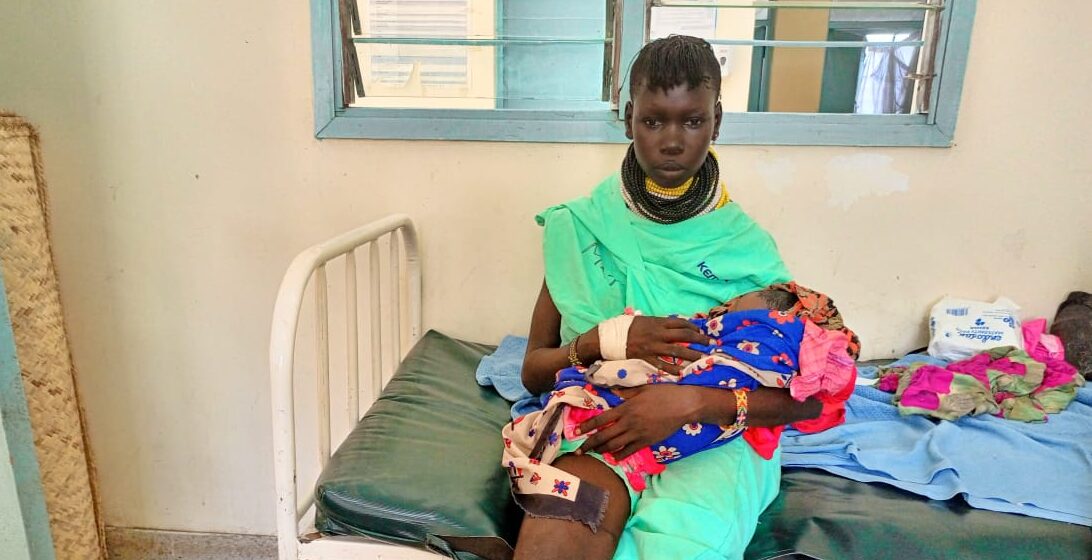From afar, we see a slender figure approaching the dispensary. Through our window we watch as she strolls through the dry, sandy landscape of Todonyang, a region located in northeastern Kenya. We notice she is young, very young – later on, she will disclose that she is merely eighteen years old. Her swollen belly is a foretoken to the imminent arrival of her first child. She is also frightened, as she is afflicted by severe pain in her belly that does not subside.
Her name is Ekaduaran and, like most women in Turkana – one of the poorest and most isolated regions in Kenya -, she has never received prenatal care until now. The weight of tradition among the tribes that inhabit this area is strong and one of the most important difficulties that we have had to face for decades during our cooperation projects.
In previous years, women in Turkana always gave birth in their households. However, in recent times, our formative talks have undermined the natives’ distrust of Western medicine and women have increasingly begun to come to our clinic in search of medical assistance. Ekaduaran has been suffering from severe pelvic pain and feared for her baby’s life. This is a reasonable concern if one takes into account that, in Turkana, neonatal mortality is one hundred times the national average, with about 220 deaths per 1,000 births.
A region lacking resources
Immediately, the health workers at our clinic begin to monitor the young mother. She is underweight and shows symptoms of malnutrition, a scourge that is sadly quite common among the inhabitants of Turkana, as they have been enduring an endemic food crisis for decades.
With this scenario, this condition can increase the risk of neonatal mortality, ie., the risk that your baby will die during the first 28 days of life, which is the most vulnerable period for the baby’s survival. Luckily, Ekaduaran arrived at the right place, at the right time. After twelve hours of monitoring, our staff at the clinic detect that the young woman is not improving, and thus decide to urgently transfer her to a hospital.
No roads or medical centres
The nearest hospital is based in Lodwar, and it withholds a well-equipped operation theatre and neonatal unit. There is only one problem: it is located more than 200 kilometres from Todonyang, a distance unattainable to cover by foot by a woman in an advanced state of pregnancy, – walking being Turkana’s only means of transport.
The lack of basic infrastructures such as roads and hospitals is yet another reason for Turkana’s heightened neonatal mortality rate. It is also the main reason why one of the most important services that our clinic offers to the local population happens to be urgent medical transfers, thanks to possessing an all-terrain vehicle. Consequently, this is the reason as to why Ekaduaran will be able to entre in a few hours the Lodwar Hospital and be examined by its medical specialists.
A quick intervention
Here, doctors discover that the young mother’s cervix is dilated by five centimetres, with grade 2 meconium staining. This diagnosis means that she has a high risk of developing fetal distress, which could have led to the baby’s death. It could also have meant this young mother’s death, had she not been able to receive urgent care. Nonetheless, this story has a happy ending. As you can see in the image, Ekaduaran gave birth to a healthy child and, currently, mother and son are perfectly healthy.
However, this happy ending has not merely been a matter of luck, it is the result of many years of arduous work to improve Turkana’s access to health care and earn the trust of this ancient tribe in relation to Western medicine. Thanks to small but critical decisions such as the one Ekaduaran made when she decided to go to our clinic, today the future of this tremendously vulnerable community shines a little brighter.
Learn more about our medical service in Todonyang



